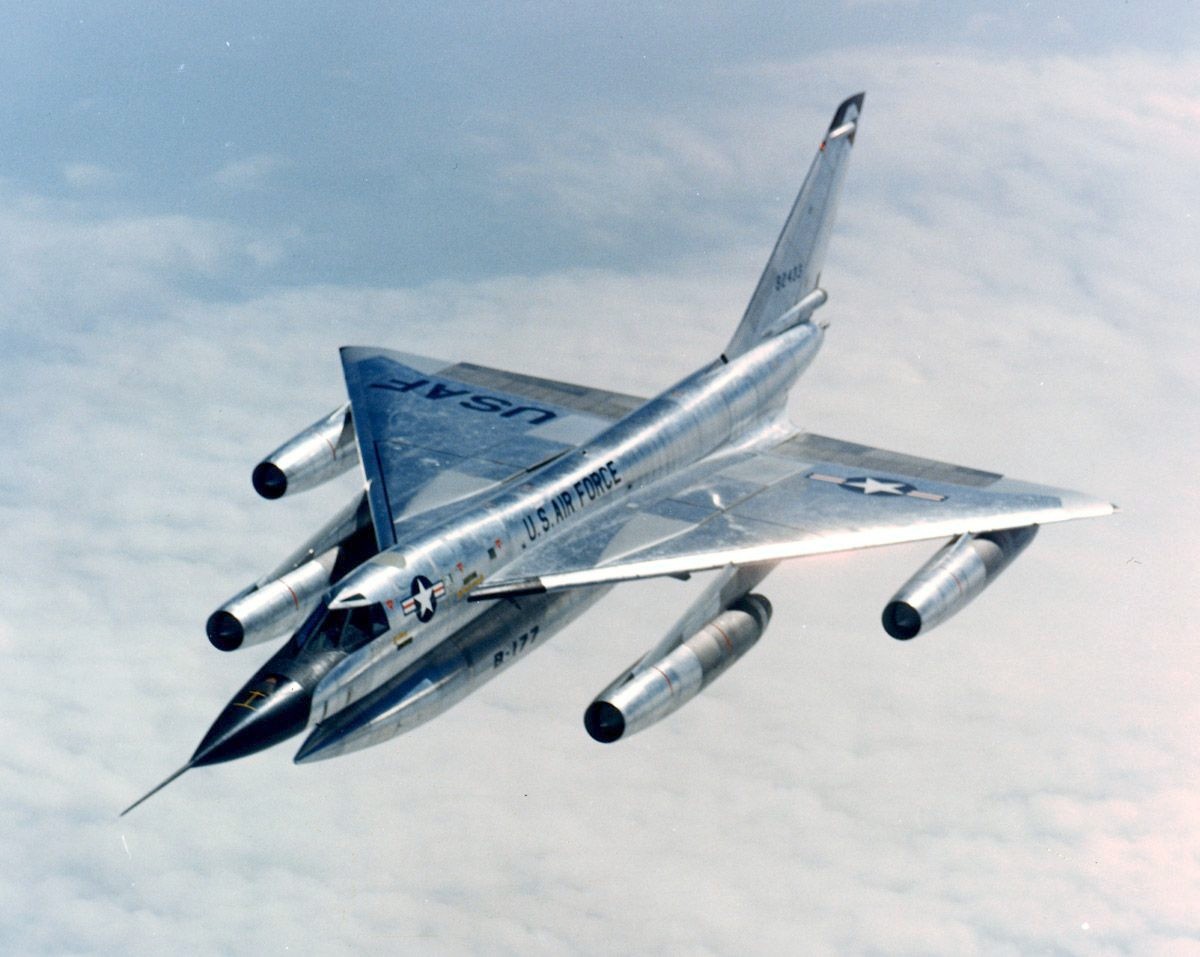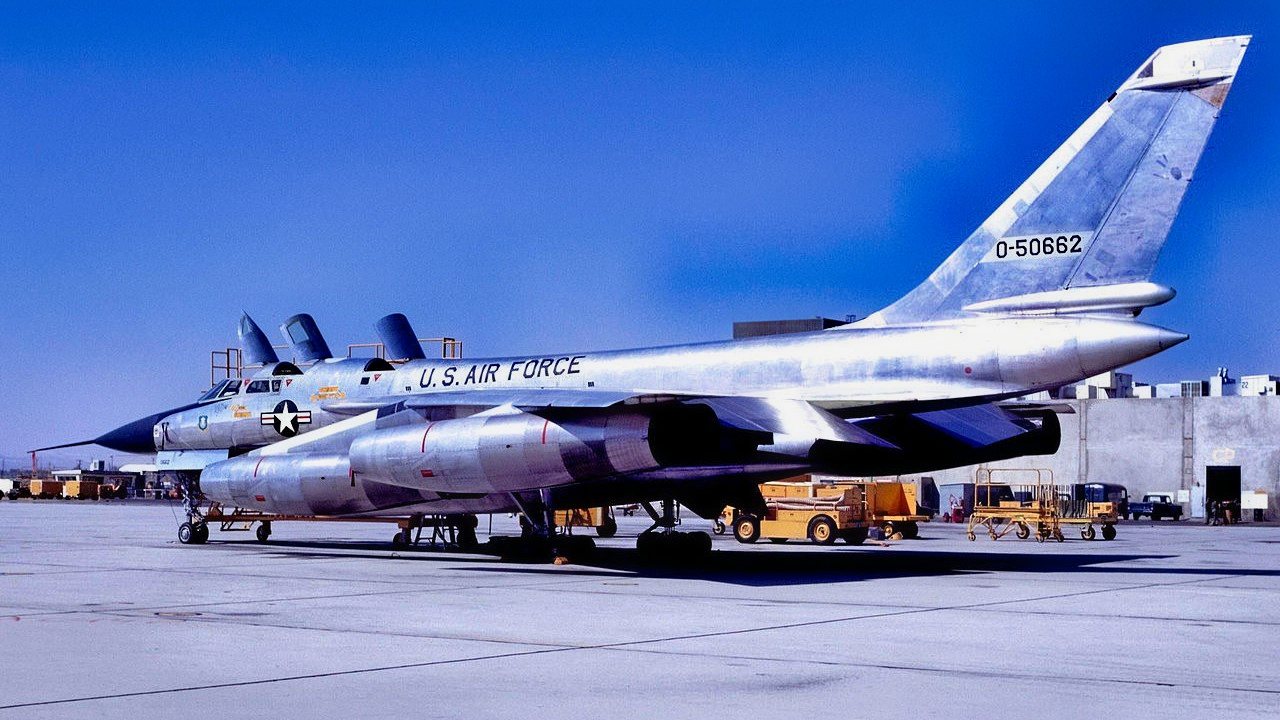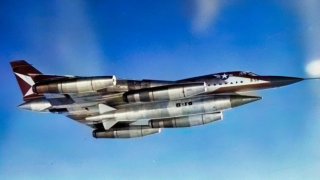B-58 Hustler: The U.S. Air Force's Mach 2 Bomber Mistake
The B-58 Hustler, produced by Convair in the 1950s, was the first supersonic bomber, capable of exceeding Mach 2.0. Designed for nuclear deterrence during the Cold War, the Hustler was intended to counter the Soviet Union's advanced defenses.
Summary: The B-58 Hustler, produced by Convair in the 1950s, was the first supersonic bomber, capable of exceeding Mach 2.0. Designed for nuclear deterrence during the Cold War, the Hustler was intended to counter the Soviet Union's advanced defenses.
-Despite setting 19 speed and altitude records and featuring advanced technology like the Sperry AN/ASQ-42 bombing/navigation system, the B-58 had significant flaws. High accident rates and challenging handling characteristics led to its early retirement by 1970 without seeing combat.
-Today, the Hustler is celebrated as a symbol of Cold War aviation, with examples displayed in museums like the National Museum of the U.S. Air Force.
The Rise and Fall of the B-58 Hustler: America’s First Supersonic Bomber
The B-58 Hustler was visually stunning, but the U.S. bomber failed to live up to expectations.
Corvair produced the B-58 Hustler in the 1950s. The B-58 became the first supersonic bomber in history, speeding past Mach 2.0. It carried out nuclear deterrence during a turbulent period in Cold War history.
With the arms race between the U.S. and the Soviet Union picking up speed, enemy jet interceptors and surface-to-air missiles were a greater threat than ever before – the U.S. Air Force needed capable strategic bombers that could face this danger. If nuclear fallout was in the cards, the Hustler would ensure destruction was mutual.
Ultimately, the bomber never saw combat. But the B-58 remains a revered symbol of Cold War aviation.
The History of the Hustler
The B-58 answered the Generalized Bomber Study’s requirements for a supersonic, long-range, manned bomber aircraft. After all the big-name manufacturing giants bid to produce this new airframe, Boeing’s MX-1712 and Convair’s MX-1626 design prototypes were selected.
Convair’s design was deemed superior down the line largely thanks to one key change. During the trial period, Convair took advantage of new developments by General Electric, swapping out its original engine design with four smaller J79s optimized for supersonic flight. This modification pushed Boeing from the competition.
Convair’s bomber design incorporated several record-breaking features in addition to its engines. The bomber’s aluminum skin bonded to honeycomb structural elements made of aluminum or fiberglass. This innovation reduced the weight of the airframe, allowing it to fly faster.
While having to refuel one time, the bomber was able to travel just under 1,700 miles in 80 minutes. The Hustler set 19 speed and altitude records in the 1960s.
The Hustler was equipped with the Sperry AN/ASQ-42 bombing/navigation system, which was believed to be around 10 times more accurate than any of its predecessors.
The Hustler’s Flaws
While the Hustler could fly faster and higher than its counterparts, it was not a perfect airframe by any means. Of the 116 B-58s that were constructed, 26 were lost, and 36 crew members were killed.
The platform was less stable than its contemporaries and more susceptible to entering a spin. The plane’s eccentric landing and take-off characteristics made it difficult for pilots to master.

Due to these issues, Secretary of Defense Robert McNamara gave the order to retire the Air Force’s Hustler fleet in the mid-1960s. The service completed the B-58’s retirement by 1970. During its operational era, the B-58 never dropped a bomb or saw combat. Today, one of the few remaining Hustlers can be viewed in the collection of the National Museum of the U.S. Air Force.

About the Author: Defense Writer Maya Carlin
Maya Carlin, National Security Writer with The National Interest, is an analyst with the Center for Security Policy and a former Anna Sobol Levy Fellow at IDC Herzliya in Israel. She has by-lines in many publications, including The National Interest, Jerusalem Post, and Times of Israel. You can follow her on Twitter: @MayaCarlin.


